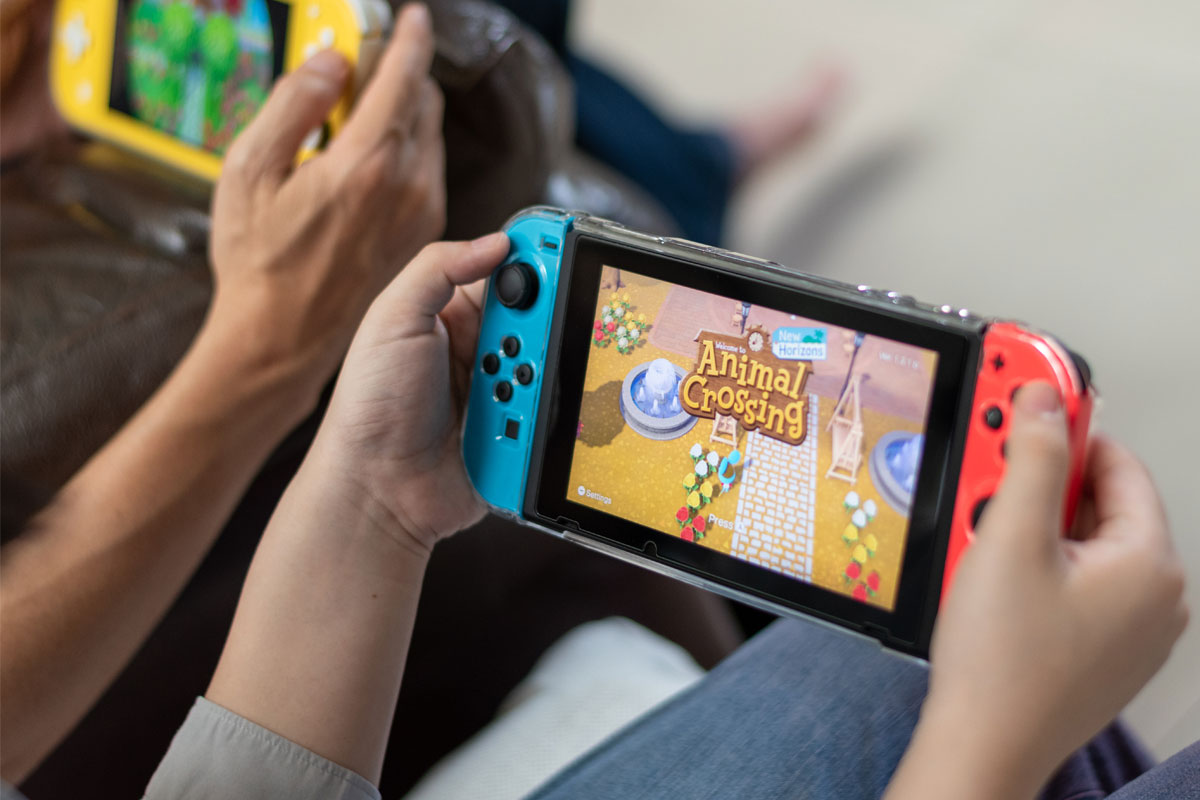
Rewind to 2015. In the midst of the console wars, PlayStation® and Xbox® gamers continued to argue in favor of their preferred console, amused top-spec PC gamers watched the drama unfold, and the handheld gaming device was considered a relic of a bygone era. In fact, Nintendo®, the former bastion of handheld gaming, was in trouble. Its latest installment, the Wii U, had been poorly received, and the company incurred crippling financial losses as a result. Fortunately, l new Nintendo product was announced – codenamed ‘NX’ – later that year and was eventually released as the Nintendo Switch® in 2017.
Fast forward. As of 2021, the Nintendo Switch was the 5th best-selling gaming device of all time, surpassing next-gen Microsoft and Sony products by over 80 million dollars. Portable, TV compatible, offering controller support and multiplayer capabilities on a single device, the hybrid set the blueprint for later handheld/hybrid gaming devices. However, as has always been the double-edged sword for handheld devices, portability means the device is battery reliant. With that in mind, here are some tips to help you make the most of your handheld.
Portable Convenience with an Eye on Human Connection
Handheld gaming’s main appeal has always been its portability. Playing on-the-go has long appealed to gamers due to the utility and the fact you can meet up with friends and game with them anywhere. Portable gaming can also be a good downtime option for workers taking a lunch break to destress. While more sizeable than their former counterparts, this generation of portable handheld gaming devices is still relatively light, meaning easy transportation. Furthermore, the selection of games on the Nintendo Switch is sure to evoke a nostalgic smile for Nintendo fans. New versions of Nintendo classics such as Super Mario®, Pokémon®, and Zelda® are sure to provide gamers with hours of enjoyment, as they play their longtime favorite franchises.
The recent COVID-19 pandemic and resulting lockdowns have meant more time spent indoors. Still, while this might negate the portability feature of the handheld, some modern handheld gaming devices feature online multiplayer capability. That means that even when confined to your home, your handheld can be used to connect with friends – and with TV and controller support, it can serve as a makeshift console in itself. Online gaming has been shown to combat loneliness during periods of lockdown or isolation, and devices such as the Nintendo Switch offer the means to engage with others from home. In fact, 1 in 4 US residents used online gaming to keep in touch in 2020 alone!
Some battery-powered gaming devices support VR (Virtual Reality) and AR (Augmented Reality) gameplay. While these have existed for some years, only recently have they come into full stride as a major part of the gaming world. Some VR and AR headsets are compatible with the Nintendo Switch, meaning you can have the sensory experience of being ‘in the game,’ while you can be anywhere you like due to the nature of portable gaming devices.
Combating Battery Life Limitations

Despite the exponential advances in handheld gaming, including better graphics, audio, and gameplay, battery life remains an issue. This can affect game time and your preferred method of play, as most handheld gaming devices are complemented by an array of wireless accessories such as controllers and headsets (including AR headsets). Wireless controllers are also subject to the dead zone, the physical distance from which one can use a controller for a device.
There are multiple solutions to the battery-power problem which has plagued handheld gamers since the outset. Due to handheld devices becoming hybrid and allowing monitor and controller play in the manner of a console, there is always an option to go wired. Nintendo Switch Pro controllers come with a port to plug the controller into the device, offering unlimited gameplay. While the notion of charging your device before, after, or during use is obvious, there are other ways to enhance your portable gaming experience.
Battery packs provide the option to game and charge on the go, increasing game time and preventing epic battles or saving the princess from being deterred. Battery packs can be relatively cheap and a great investment in general, especially since they can be used to power gaming accessories such as headsets.
The advancements in microprocessors that enable energy efficiency while allowing devices to perform at optimum processing power, even without a battery, look promising for all handheld devices. They’ll certainly benefit those devices requiring longer usage.
The new era of handheld gaming has seen unprecedented advancements, most notably the new battery-powered device’s hybrid design and utility. Today’s handheld can perform as a makeshift console, offer online multiplayer gameplay, and can facilitate developments such as VR and AR gaming. Battery life continues to be an issue, though now there are multiple solutions available, from battery packs to advancements in microchips. All things considered, the future is looking quite bright for handheld gaming.

How Ambiq Contributes
Ambiq® is helping to enable the evolution of portable console gaming by offering a solution to extended playtime and complex processing. Ambiq chips allow battery-powered gaming consoles to last longer and operate at peak performance levels.
Ambiq is a leader in system on a chip (SoC) design. See how the Apollo3 Blue SoC is helping enable the Game Boy to play Tetris® battery-free with its patented Sub-threshold Optimized Technology (SPOT®) platform.
To learn more about how Ambiq contributes, check out our innovative solutions.


